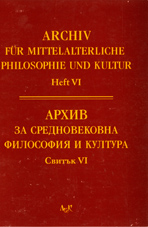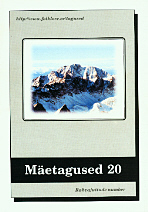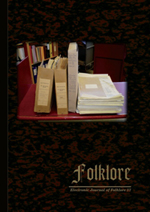


In the 1920s-1940s, Estonian press publish numerous descriptions of search for treasures and archaeological findings. Some published classical legends from the Estonian Folklore Archives. Media is one of the common channels for spreading folklore - is there some essential difference between the text published in the newspaper and archived in the archive. A newspaper story is expected to be on a hot topic, a legend becomes hot in context. In their narrative form, both press and oral narrative tradition satisfy the human need to experience varied emotions. The journalist's job in writing a message is akin to that of a legend narrator. A news story should be of interest for many, while with heritage, its collective character is emphasised, even though every single folk narrative has definite different ranges of distribution in time and space. In the case of treasure legends, there is cause to believe that part of the information belonged to a small group of users only. The typology of treasure legends published in press is limited to a dozen narrative types, probably those in active circulation at the time. The stories were presented as true; mythological legends were either avoided or were supplemented with comments and evaluations. Narratives of treasures were not invented media legends but used as a story to decorate local heritage or some event. The topic exhausted itself by the end of the 1930s.
More...
The article analyses the differences between a legend and a memorate. A legend is a short narrative of one episode that can have a background partially based on experience and observation but that has not emerged directly from these but instead from concepts of similar nature. Legends are created by people's ability to fabulate, while of special importance is that they have attained a fixed form that leaves little play for individuality. The other form of folk narrative is the memorate, based on individual experience, though the narrative motif may be one of the legend motifs. Legends and memorates influence each other. On the one hand, memorates often take their material from legends or legend motifs. On the other hand, memorates are a good ground for sprouting new legends. Often memorates are polished into part of the heritage, turning into legends in the process. The article views the relations of legend and memorate on the example of Scandinavian forest fairy tradition. Narratives in question range from legends to personal experience narratives. The latter are strongly influenced by folk belief. Thus, a researcher of folk belief needs to first of all study personal experience narratives. There is also a group of memorates that tends to mislead researchers - descriptions of purely personal experiences that thus characterise only the person that experienced the event. Another threat to the researcher is that lacking necessary amounts of material, no reliable conclusions can be reached. Translation based on the German article Memorat und Sage. Einige methodische Gesichtspunkte published in Saga och sed. Gustav Adolfs Akademiens årsbok 1935. Uppsala: A.-B. Lundequistska Bokhandeln, pp 120-127. Translated by Riina Link.
More...What is corruption and why is it considered as a wide-spread evil? Experts working on that problem, both in developed and developing countries, in countries with old and stable democracy, as well as in the ones, where democracy has just appeared stated, that, in general, corruption means “using a public authority for private benefits”, no matter who initiates the practice first – the politician or a businessman. In Latvia corruption is ranked as a major problem on the basis of indicators used by international organizations. In this paper I will write about the present indicators connected with corruption in Latvia, find sources of this problem and show what can that mean for the future of the country and if it’s possible to develop quickly in the European Union for this one of the three “Baltic Tigers” – like it happened with Ireland. First of all we will have a glimpse on Latvia in general.
More...European Commission: Moldova is invited to enter into intensified political, security, economic and cultural relations with the EU, enhanced cross border co-operation and shared responsibility in conflict prevention and conflict resolution. One of the key objectives of this action plan will be to further support a viable solution to the Transnistria conflict. The level of ambition of the relationship will depend on the degree of Moldova’s commitment to common values as well as its capacity to implement jointly agreed priorities. The pace of progress of the relationship will acknowledge fully Moldova’s efforts and concrete achievements in meeting those commitments. This Action Plan is a first step in this process. The EU Moldova Action Plan is a political document laying out the strategic objectives of the cooperation between Moldova and the EU. Implementation of the Action Plan will significantly advance the approximation of Moldovan legislation, norms and standards to those of the European Union. In this context, it will build solid foundations for further economic integration based on the adoption and implementation of economic and trade-related rules and regulations with the potential to enhance trade, investment and growth.
More...Proposal laying down general provisions establishing a European Neighbourhood and Partnership Instrument (presented by the Commission). A specific and innovative feature of the ENPI is its crossborder cooperation component. Under this component, the ENPI will finance “joint programmes” bringing together regions of Members States and partner countries sharing a common border. This will bring a radical simplification in procedures and substantial gains in efficiency. It will use an approach largely modelled on “Structural Funds” principles such as multiannual programming, partnership and cofinancing, adapted to take into account the specificities of external relations. The crossborder cooperation component of the ENPI will be cofinanced by the European Regional Development Fund (ERDF). Title III includes a set of provisions specifically designed for this component only. These provisions are consistent with similar provisions established for crossborder cooperation under the relevant Structural Funds regulations.
More...In the last months it has been widely discussed and debated whether Turkey should join or not the European Union as a member with full rights. There are some who argue that Turkey is an asset for the EU, while others fear that an Islamic country will bring with it the fundamentalist threat inside the European community. Is religion the problem? Can EU be considered a Christian club as some pro-Turkey lobby-ists sustain?
More...
Keywords: cultural heritage; history culture; memory turn; social and cultural memory; tradition
The aim of this article is to outline the main concepts used in cultural research, which denote the use of the past, to look into the trajectories of their mutual relationships, and to discuss the causes and development potential of the multi-faceted landscape of concepts that has emerged. Serving as an introduction to this thematic volume, this article creates the necessary conceptual framework for reading the following case studies. Two pairs of concepts are observed, which provide information on the modern cultural research of selected pasts: history culture and memory, and tradition–heritage. It is concluded that all the observed concepts could in the current situation be dealt with not only as fields of research, but as perspectives relevant for all areas of cultural research. Whether and to what extent the research of history culture, memory, tradition and heritage are entangled, is dependent on problem settings and objects of research, to which the respective research directions were originally related, but also connected with disciplinary contexts and academic traditions in different countries. In addition to impulses arising from inside research directions, the reason for the greater engagement of these directions could be the rise of interdisciplinary fields, which are not anchored to any specific concepts. A situation in which cultural research concepts with solid trajectories become replaceable occurs also in the case of transdisciplinary ‘turns’. The research perspectives behind different concepts are best engaged within a specific field of research, which in turn have made way to the emergence of new concepts that bridge the established ones. In the context of this thematic volume, it is meaningful to refer to the increased cross-disciplinary interest in how the representation of the past in a variety of public spheres takes place. In this respect, concepts have been taken into use that refer to the ‘public’ at different levels: from official, state-sanctioned institutions to less formal, often locally based settings, and to particular, individualised contexts.
More...
Keywords: digital humanities; IT-applications
Kaisa Kulasalu gives an overview of the seminar “Estonian Digital Humanities Anno 2013: IT-Applications in Humanities”, which took place at the Estonian Literary Museum on October 25, 2013.
More...
Christa Agnes Tuczay. Die Herzesser. Dämonische Verbrechen in der Donaumonarchie. Wien: Seifert Verlag 2007. 160 pp. An introduction of the book by Reet Hiiemäe.
More...
Keywords: winter school of folkloristics; indigenous culture; Jharkhand
Reet Hiiemäe recalls the winter school of folkloristics under the heading “Tradition, Creativity and Indigenous Knowledge: Winter School of International Folkloristics and Indigenous Culture”, which took place in Jharkhand, India.
More...
Shaping Virtual Lives. Online Identities, Representations and Conducts. Violetta Krawczyk-Wasilewska, Theo Meder, Andy Ross (eds.). Lodz: Lodz University Press, 2012. 148 pp.
More...
Keywords: paremiologists; proverbs; 7th Interdisciplinary Colloquium on Proverbs
More...
Keywords: business history; company histories; corporate history culture; history management; nostalgia; Porin Puuvilla Oy; retro; use of history
Histories are used and produced for several reasons and purposes. History culture consists of the entirety of generations, modifications, transformations and utilisations of the images of the past. This article is concerned with corporate history culture that is manifested in commissioned company histories and other representations of company history. History culture is always oriented to the future. Corporate history culture developed out of the demand in companies, not within universities. I clarify, in the light of a microhistorical case of Porin Puuvilla Oy, how and why different actors select one past to be historicised and leave another to be obsolete. I open my contribution with an introduction to the concepts and practices of corporate history culture and history management. Then I move on to the case study and analyse the way that practice and representations of corporate history culture changed between 1948 and 1973. As my methodological contribution, I introduce the analytical four-field of the internal and external dimensions of history management. I conclude the article with a discussion of the corporate history culture in the context of the concepts of retro and nostalgia.
More...
Keywords: Kazys Grigas; paremiologist
March 1 was the 90th birth anniversary of Kazys Grigas, a merited Lithuanian paremiologist.
More...
Editor Arūnas Vaicekauskas. The Power of the Mask. The Ritual Year 5. Kaunas: Vytautas Magnus University 2013. 150 pp. The reviewer of the book is Mare Kõiva.
More...
Keywords: culture industries; dissonant heritage; heritage tourism; historical monuments; memory sites; prison architecture
A continuous discussion of which perspectives to include and which to exclude characterises the definition of cultural heritage. After Norway’s new Prison Act had been introduced in 1857, the foremost architects in the country were engaged when the decision was made to build a series of regional prisons. Today some of these former bastions of justice need to be accorded new functions. The discussion here is based on an examination of two former prisons that have been turned into cultural institutions. It is a contemporary study primarily based on observations and photographic documentation, supplemented by information from local historical literature and informal conversations (interviews). The research questions are: What processes are put into effect if buildings erected to ensure punishment are regarded as cultural heritage, and what processes of selection of relevant stories take place? Focus is put on how and why certain aspects of the past are highlighted and others are silenced, and several factors are involved here. Ignoring certain elements can be a way to protect individuals from exposure and recognition on purely ethical grounds, but it can also be a way of excluding historical events that do not correspond very well with the new cultural profile.
More...
Keywords: 3rd all-Russian congress of folklorists; Voronovo; Moscow
Piret Voolaid speaks about the 3rd all-Russian congress of folklorists, which took place in Voronovo, Russia, on February 3–7, 2014.
More...
Keywords: Dracula tourism; local heritage; Romania; the use of history; tour narrations; tradition
Dracula tourism in Romania combines fiction with history. It is centred on either the fictional Western vampire Count Dracula or the historical Dracula, the fifteenth-century Romanian ruler Vlad the Impaler. These two characters are also often conflated, or sometimes even forged together, into one Dracula figure in Dracula tourism. Besides the history concerning the ruler, Vlad the Impaler, through Dracula tourism the guides and travel agencies also tend to offer much more history and tradition of Romania in their tours. In this article I will examine what kind of history is told and what is left out. I am especially interested in the history and tradition (as it is manipulated) that is not connected to Vlad or Dracula. I look at the types and eras of history used and emphasised in Dracula tourism in Romania, and the reasons for the choices. I am also interested in the idea of how the seemingly superficial and fictitious Dracula tourism can be used as a gateway into Romanian history and culture.
More...
Keywords: Sille Kapper; doctoral thesis; changing traditional folk dance; consepts; realizations
On December 12, 2013, Sille Kapper defended her doctoral thesis “Changing Traditional Folk Dance: Concepts and Realizations in Estonia 2008–2013” at the Estonian Institute of Humanities at Tallinn University. An overview of the thesis is given by Ingrid Rüütel.
More...